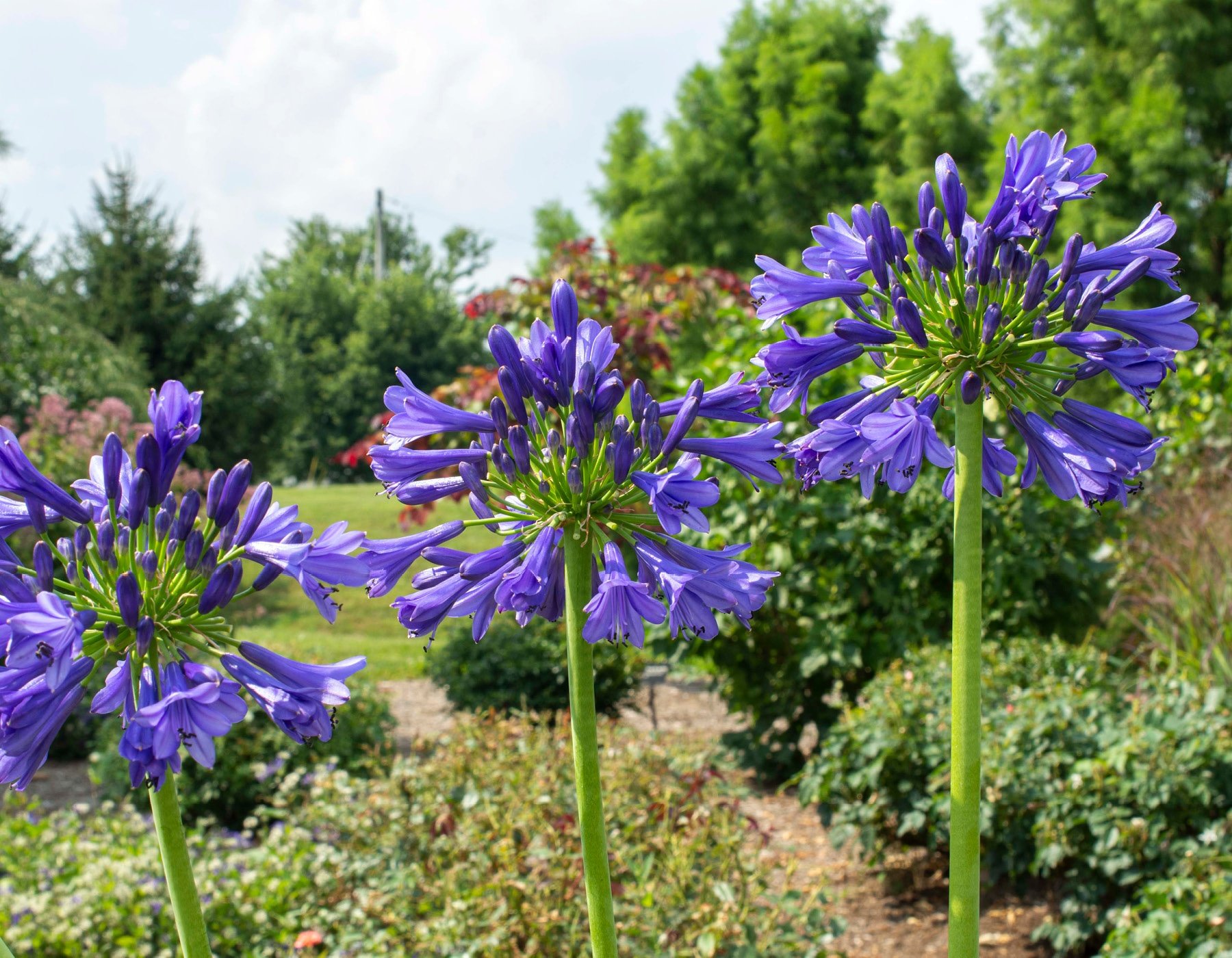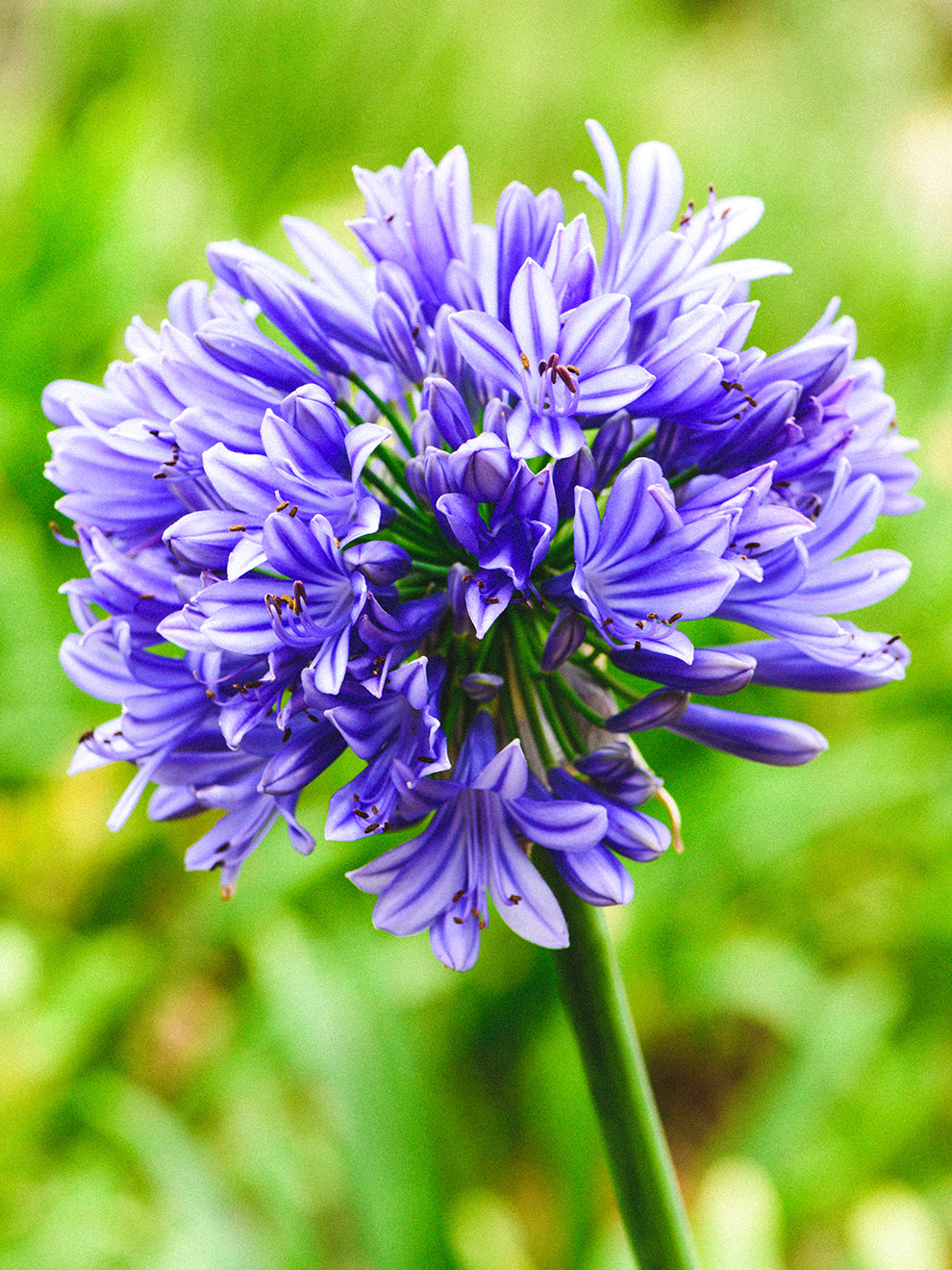Agapanthus Varieties: Selecting the very best for Your Landscape
Wiki Article
Grasping the Art of Agapanthus Treatment: Important Steps for Healthy Growth and Dynamic Blossoms
In the world of cultivation, the cultivation of agapanthus stands as a satisfying venture for those that look for to support these sophisticated blooming plants. With their striking blossoms and graceful foliage, agapanthus has actually captured the attention of garden enthusiasts worldwide. Nevertheless, accomplishing ideal development and dynamic blossoms needs a nuanced method that encompasses various necessary actions. From picking the ideal range to mastering pruning strategies, the trip towards cultivating growing agapanthus plants is complex and holds the key to unlocking the complete possibility of these botanical treasures.
Selecting the Right Agapanthus Variety

When choosing the best Agapanthus range for your yard, consider aspects such as environment viability, blossom color, and development habit. Agapanthus, frequently understood as Lily of the Nile or African lily, is available in a range of shades ranging from shades of blue and purple to white. Choose a bloom shade that complements your existing garden combination to develop an unified landscape. Furthermore, consider the environment in your area to make certain the Agapanthus selection you choose can flourish in your specific problems. Some ranges are much more forgiving of chilly temperatures, while others choose warmer environments. Comprehending the growth habit of various Agapanthus ranges is essential for proper placement within your yard. Some selections have a clumping growth habit, perfect for containers or boundaries, while others have a more spreading nature, appropriate for ground cover or mass growings. By thoroughly reviewing these elements, you can choose the best Agapanthus range to enhance the beauty of your garden.
Ideal Growing Conditions
Taking into consideration the ideal environmental needs is necessary for successful Agapanthus farming. Agapanthus prospers in well-draining dirt with a slightly acidic to neutral pH level. When planting, pick a place that gets complete sunshine to partial shade. In hotter climates, offering some afternoon color can stop scorching of the leaves. Agapanthus plants are sensitive to cool temperature levels and ought to be shielded from frost during winter months.To ensure healthy development and vibrant flowers, plant Agapanthus light bulbs at a deepness of concerning 2-4 inches and area them 8-12 inches apart. Adding natural matter, such as garden compost, to the dirt can boost water drainage and fertility, promoting robust origin growth. Mulching around the base of the plants aids retain wetness and reduces weed development. Regular watering is crucial, particularly throughout the growing season, to keep the soil consistently moist but not soaked.
Watering and Fertilizing Tips
Preserving correct moisture degrees and providing important nutrients are essential aspects in the care routine for Agapanthus plants. It is important to strike a balance when it comes to watering Agapanthus. These plants choose regularly moist soil but are vulnerable to root rot if overwatered. Throughout the expanding period, water deeply when a week, guaranteeing the soil is well-draining to avoid waterlogging. In hotter environments or during periods of drought, more constant watering may be essential to keep the dirt uniformly wet. Nonetheless, reduce watering in the winter to stop waterlogged conditions.Fertilizing Agapanthus is crucial for advertising healthy and balanced growth and prolific blossoms. Apply a well balanced fertilizer, such as a 10-10-10 formula, in the very early spring as new development emerges. Repeat this application every 6-8 weeks official site throughout the growing period. Prevent excessive fertilizing, as it can result in lush vegetation at the expense of blossoms. Constantly follow the maker's instructions for appropriate dilution and application methods. By complying with these watering and fertilizing suggestions, you can ensure your Agapanthus plants prosper and produce vibrant, durable blooms.
Trimming Strategies for Agapanthus
Trimming Agapanthus plants at the appropriate times and with correct strategies is crucial for maintaining their health and advertising optimum development and flowering. The optimal time to trim Agapanthus is in late winter months or very early springtime before new development arises.For flowered stems, wait until the blooms have actually withered and after that trim them back to the base. This not only cleans the plant's look however also motivates the development of brand-new blossom buds. Deadheading spent flowers can likewise redirect the plant's energy right into producing more blossoms instead than click for more establishing seeds. However, if you intend to accumulate seeds for proliferation, leave some blossoms to dry and mature on the plant.
Keep in mind to make use of tidy, sharp tools to make specific cuts and decrease the threat of introducing illness. Agapanthus. Regular trimming will certainly help keep your Agapanthus looking neat and healthy while making certain a bountiful screen of beautiful blooms
Dealing With Common Parasites and Diseases
After ensuring appropriate trimming methods for Agapanthus, it is necessary to address common parasites and conditions that can affect the wellness and vigor of these plants. One usual insect that influences Agapanthus is the Agapanthus gall midge.Additionally, Agapanthus plants can experience from root rot if they are planted in badly draining pipes dirt. By being vigilant and taking prompt action versus bugs and conditions, you can aid your Agapanthus plants grow and create lively flowers. Agapanthus.

Conclusion
In verdict, understanding the art of agapanthus care involves picking the best variety, giving excellent planting conditions, correct watering and fertilizing, suitable pruning methods, and resolving typical insects and illness. By following these crucial steps, you can ensure healthy development and lively blooms for your agapanthus plants. Bear in mind to on a regular basis keep an eye on and keep your plants to advertise their general wellness and longevity.To make sure healthy growth and vibrant blooms, plant Agapanthus bulbs at a depth of about 2-4 inches and space them 8-12 inches apart. By following these watering and fertilizing tips, you can ensure your Agapanthus plants grow and produce vibrant, durable flowers.
One typical parasite that affects Agapanthus is the Agapanthus gall midge. In addition, Agapanthus plants can experience from origin rot if they are planted in poorly draining pipes soil. By following these vital steps, you can make certain healthy development pop over to these guys and vivid blooms for your agapanthus plants.
Report this wiki page